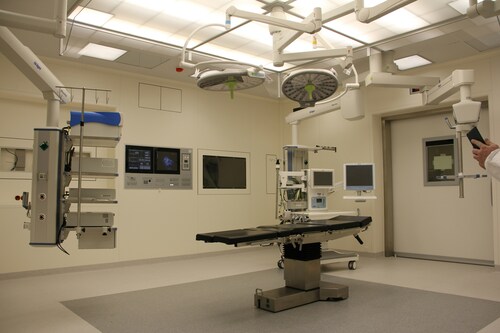Pregnancy is a time of joy and hope for many women. But what happens when this joy is overshadowed by loss? How can a woman who has conceived multiple times experience repeated miscarriages? These are questions that many women facing recurrent pregnancy loss grapple with. Understanding the underlying causes can provide clarity and, more importantly, hope.
One significant factor that often goes overlooked is the health of the uterus. Issues with the uterus are a cause of these heartbreaking losses. In this article, we will explore the connection between uterine issues and recurrent pregnancy loss, shedding light on how fertility preservation plays a crucial role in the journey to parenthood.
The Role of the Uterus in Pregnancy
The uterus is central to a successful pregnancy. It is the organ where the fertilized egg implants and grows into a baby. A healthy uterus provides a nurturing environment for the developing embryo, ensuring it receives nutrients and protection. However, when the uterus is in trouble, this nurturing environment can be compromised, leading to complications.
The uterus must be free of structural abnormalities, infections, or chronic conditions to support a pregnancy. Any deviation from this can interfere with the embryo’s development and, unfortunately, result in pregnancy loss. This makes it crucial for women experiencing recurrent pregnancy loss to explore the health of their uterus as a potential factor.
Common Uterine Issues Leading to Pregnancy Loss
Several uterine conditions can contribute to recurrent pregnancy loss:
- Uterine Fibroids: Non-cancerous growths in the uterus that can interfere with embryo implantation or fetal development, leading to miscarriage.
- Endometrial Polyps: Growths in the uterus lining that disrupt the implantation process, hindering embryo development.
- Asherman’s Syndrome: Scar tissue inside the uterus, often from surgery or infection, creates a hostile environment for an embryo, causing repeated pregnancy loss.
- Congenital Uterine Anomalies: Abnormal uterine shapes or structures, such as a septate or bicornuate uterus, that complicate embryo implantation and growth, increasing miscarriage risk.
How Uterine Issues Are Diagnosed
Diagnosing uterine issues often involves several tests. Doctors may recommend imaging tests like an ultrasound, hysteroscopy, or MRI to get a detailed view of the uterus’s structure. Sometimes, a hysterosalpingogram (HSG) is used to check for blockages or abnormalities in the uterus and fallopian tubes.
These diagnostic tools help healthcare providers identify any abnormalities or conditions that could be contributing to pregnancy loss. Once identified, a treatment plan can be developed to address the issue and improve the chances of a successful pregnancy.
Treatment Options and Fertility Preservation
Treatment for uterine issues varies by condition. Surgery may be recommended to remove fibroids, polyps, or scar tissue from Asherman’s Syndrome. Congenital uterine anomalies might also be surgically corrected to improve the uterus’s shape and function. Medications may be prescribed to address infections or hormonal imbalances.
Fertility preservation becomes an essential consideration during treatment. For women who are not yet ready to conceive or who need to undergo extensive treatment, options like egg freezing or embryo freezing can preserve the possibility of having children in the future. This approach allows women to focus on addressing their uterine health without the added pressure of a ticking biological clock.
The Importance of Early Intervention
Early intervention is critical to improving the chances of a successful pregnancy. Women who experience recurrent pregnancy loss should seek medical advice sooner rather than later. By identifying and treating uterine issues early, the chances of carrying a pregnancy to term increase significantly.
A proactive approach improves the likelihood of a healthy pregnancy and preserves fertility for the future. Fertility conservation offers hope and options for women who may need more time to address their health issues before starting or expanding their families.
Recurrent pregnancy loss is a heartbreaking experience, but it is essential to understand that uterine issues can often be the underlying cause. Fertility preservation plays a vital role in this process, offering hope and the possibility of a successful pregnancy. With the correct diagnosis, treatment, and support, many women can crush these challenges and achieve their dream of parenthood.




